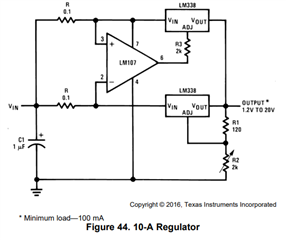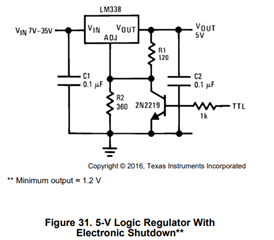Other Parts Discussed in Thread: OPA990
Tool/software:
Hello,
I would like to use two LM338 in parallel and implement shutdown capability. For up to 28V, 8A output.
I see that figure 44 in the datasheet shows an example of the devices in parallel, but I see that its noted for +1.2V to 20V output. Is 28V output not possible with this configuration?
I also see that there is figure 33 with an example of the LM338 with shutdown using an NPN transistor. Could this be directly applied to the lower LM338 when used in parallel configuration?


